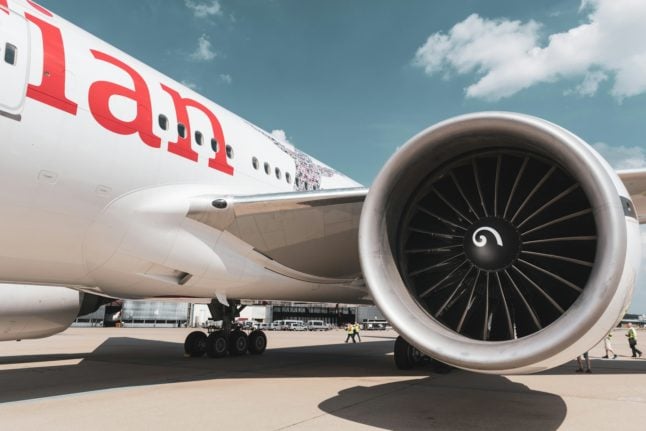Even with the coronavirus pandemic, Austrians have travelled – a lot. About 4.5 million Austrian residents took at least one holiday trip home or abroad in 2020.
That year, almost three-quarters of the trips were domestic, according to Statistik Austria, but in previous, pre-pandemic years, most trips had been taken to other European destinations. And the most popular countries among Austrians were Germany, Italy, Croatia, Hungary, and Spain.
All excellent places to spend a few days over spring, whether heading off to coastal cities for a swim in the sea or driving inland just to enjoy different cities, languages and maybe some beautiful lakes and spas, these countries are Austrian’s favourites for a good reason.
The proximity also makes the trips more accessible, and a majority of travels are made by cars (59%) and planes (24.6%).
As many European countries relax their covid restrictions, they also become more attractive options for an easy and chill trip to welcome spring. However, there are still rules to be aware of when visiting popular destinations around Austria.
Here’s a summary. Keep in mind that many of these measures can change at short notice, and always check the relevant links.
Germany
“Upstairs neighbour” Germany does not have Austria in any high-risk lists. This means that travellers aged 12 or over must carry with them a negative test result or proof of vaccination or recovery when entering the country.
There is no need for a digital registration on entry.
Inside Germany, things are a little more complicated, with different restrictions depending on which state you are visiting. However, the country is set to drop most measures, including mandatory masks and showing G-proof to enter gastronomy, on April 2nd.
READ ALSO: EXPLAINED: The Covid measures across German states
Italy
Travel to Italy for any reason, including tourism, is currently allowed from all countries as restrictions were eased as of March 1st.
All arrivals need to show proof of vaccination, recovery or a negative test result, which must be established before boarding flights or ferries, and possibly during border checks if travelling by road or rail.
Travellers also need to fill out a passenger locator form, or ‘dPLF’. Find out how to do that here.
Once inside the country, there are a few rules to be aware of. There is currently a mask mandate in all indoor as well as some outdoor public places. Additionally, many businesses will ask for a “green pass” with proof of vaccination or recovery from Covid-19 or a negative test.
A “super green pass” is required to access venues, including restaurants, hotels, and public transport. It is equivalent to the 2G rule in Austria, meaning only vaccinated or recovered people can enter.
READ ALSO: At a glance: What Covid-19 rules are now in place in Italy?
Croatia
Travellers can enter Croatia if they provide proof of complete vaccination, evidence of recovery, or a negative result to a pre-departure test. They also need to complete an online form before departure. Children younger than 12 are exempt from testing requirements if the parents comply with the entry rules.
According to the government website, the use of facemasks is mandatory in all indoor areas and in outdoor public spaces where it is not possible to maintain a physical distance of 1.5m. In addition, places such as bars and nightclubs require a 3G proof for entry.
Beaches and thermal spas are open for public use, again keeping in mind that health and safety, as well as any social distancing measures in effect at the time, will apply.
READ ALSO: Austria’s beaches’ second cleanest in Europe’
Hungary
Since early March, Hungary has lifted many coronavirus restrictions and all its entry restrictions.
Travellers can enter the country without the need for proof of vaccination, recovery certificates or any kind of test. Additionally, the special rules of access for specific services and events were also lifted, according to Hungary’s tourism website.
There are no longer any G-rules for hotels, spas, sporting or cultural events, music and dance festivals, or outdoor events.
READ ALSO: Austria’s ‘original influencer’: Ten weird facts about the Austrian Royal Family and Empress Sissi
Spain
Passengers arriving by air or sea need to complete a Health Control Form before departure and obtain their QR code to present at boarding and health controls on arrival in Spain.
In addition to the form, passengers need to present a certificate proving vaccination against Covid, a negative test, or a recovery certificate. Children under 12 years of age are exempt from giving these certificates.
In some regions of Spain, the ‘EU Digital COVID Certificate’ is required to access certain public spaces. Spain’s Autonomous Communities can implement specific territorial regulations.
Face masks are mandatory in indoor public spaces but also required outdoors if a 1.5m distance is not possible at large events.
Spanish regions have virtually lifted all other previous Covid restrictions such as capacity limits, curfews, limited opening hours, the Covid health pass and bar, restaurant, and nightclub closures.
READ ALSO: TRAVEL: Will Spain change its Covid restrictions ahead of Easter?
Coming back to Austria
Currently, Austria has a simple 3G rule for entry, and no quarantine requirement.
Travellers need only to present proof of vaccination, recovery, or negative test to enter the country. Here’s all you need to know about Austria’s current entry and Covid rules.



 Please whitelist us to continue reading.
Please whitelist us to continue reading.
Member comments